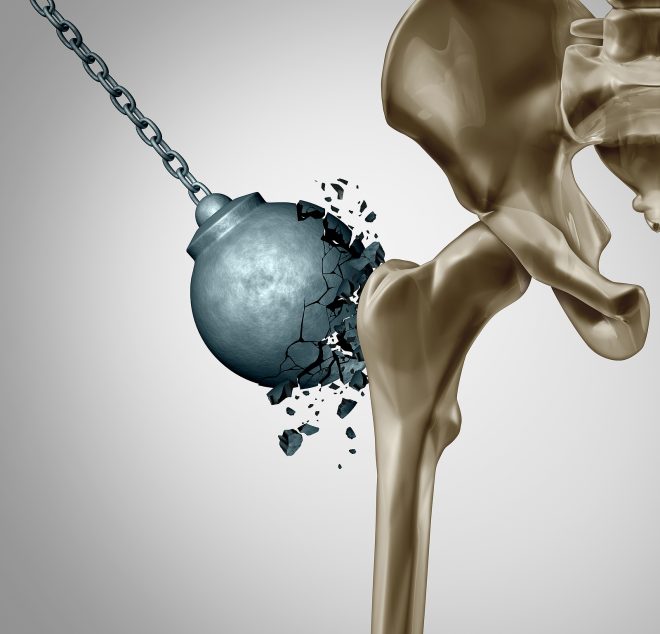
Tips To Keep Your Bones Healthy
It is surprisingly simple to maintain the health of your bones. Recognise the effects that nutrition, exercise, and other lifestyle choices can have on your bone mass. The body uses bones for a variety of purposes, including storing calcium, attaching muscles, protecting organs, and giving structure. Even though it’s critical for children and adolescents to have strong, healthy bones, adults may also take precautions to maintain bone health.

Why is bone health important?
Your bones are always changing; they are breaking down and growing new bone. Your bone mass increases and new bone is created by your body more quickly than existing bone is broken down when you’re young. Most people reach their peak bone mass around age 30. After then, your bone mass continues to remodel, but at a slightly slower rate.
The amount of bone mass you achieve by the time you are 30 and the rate at which you lose it after that will determine your risk of developing osteoporosis, a disorder that causes bones to weaken and fracture. More bone “in the bank” and a lower risk of osteoporosis as you age correspond to a higher peak bone mass.
What affects bone health
Bone health can be affected by several causes, including:
- The calcium content of your diet – Low calcium diets are linked to early bone loss, reduced bone density, and a higher risk of fractures.
- Exercise – Osteoporosis is more common in physically sedentary people than in physically active people.
- Alcohol and tobacco usage – According to research, smoking may be a factor in weak bones. In a similar vein, men and women who routinely consume two or more alcoholic beverages daily may be at higher risk of developing osteoporosis.
- Sexual – Women have less bone tissue than males do, so they are more likely to develop osteoporosis.
- Body Dimensions – If you have a small body frame or are extremely thin (body mass index 19 or below), you may have less bone mass available to you as you age.
- Age – As you age, your bones weaken and grow thinner.
- Ethnicity and lineage – The two populations most at risk for osteoporosis are Asian or White. Furthermore, you have a higher risk if you have a parent or sibling with osteoporosis, particularly if there is a family history of fractures.
- Hormone concentrations – Bone loss can result from high thyroid hormone levels. Women have a sharp increase in bone loss during menopause as a result of declining oestrogen levels. Amenorrhoea, or the prolonged lack of menstruation prior to menopause, raises the risk of osteoporosis as well. Loss of bone mass in men may be brought on by decreased testosterone levels.
- Eating disorders in addition to other ailments – In both men and women, severely limiting food intake and being underweight affects bone. Furthermore, disorders like coeliac disease and weight-loss surgery can interfere with your body’s capacity to absorb calcium.
- Certain drugs – Bones are harmed by the long-term use of corticosteroid drugs such as dexamethasone, cortisone, prednisolone, and prednisone. Additional medications that may raise the risk of osteoporosis include methotrexate, several anti-seizure drugs like phenytoin (Dilantin) and phenobarbital, aromatase inhibitors used to treat breast cancer, and selective serotonin reuptake inhibitors.
What can I do to keep my bones healthy?
There are easy things you can do to stop or minimise bone loss. Such as:
- Consume an abundance of calcium-rich foods – The Recommended Dietary Allowance (RDA) for adults (19–50 years old) and men (51–70 years old) is 1,000 mg of calcium per day. For women 51 years of age and above, and for men 71 years of age and above, the recommended daily dosage is 1,200 mg.
- Dairy products, almonds, broccoli, kale, tinned salmon with bones, sardines, and soy products like tofu are good sources of calcium – Consult your doctor about taking supplements if you have trouble getting enough calcium from your diet.
- Be mindful of vitamin D. For the body to absorb calcium, vitamin D is required – Adults between the ages of 19 and 70 should consume 600 international units (IUs) of vitamin D daily. The daily recommended amount for persons 71 years of age and above rises to 800 IUs.
- Salmon, trout, whitefish, and tuna are examples of oily fish that are good providers of vitamin D – Eggs, mushrooms, and fortified foods like cereals and milk are also excellent sources of vitamin D. The body produces vitamin D in part because of sunlight. Consult your doctor about taking supplements if you’re concerned about obtaining enough vitamin D.
- Make physical activity a part of your everyday schedule – Weight-bearing activities that increase bone strength and reduce bone loss include jogging, walking, and climbing stairs.
Steer clear of drug abuse. Avoid smoking. It is not advisable for women to consume more than one alcoholic beverage every day. Men should limit their alcohol consumption to no more than two drinks each day. - Enlist your doctor’s help – See your physician if you have any concerns regarding the health of your bones or if you have any risk factors for osteoporosis, such as a history of bone fractures. A bone density test might be suggested by him or her. Your doctor will be able to assess your bone density and bone loss rate with the use of the results. Based on this data and your risk factors, your physician can determine if you could benefit from taking medicine to slow the loss of bone.

